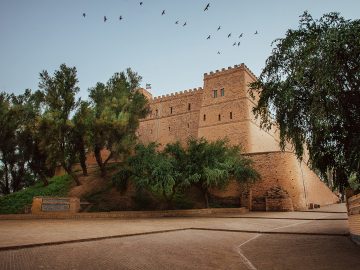
Shush is one of the oldest residential places of the world that is located in Khuzestan province, and was inhabited from 4200 BC. The ancient Shush was chosen as a capital from the time of Elamite to Achaemenian. During Elamite era, the city used to be a religious center and at the time of Achaemenian, it was used as the winter capital. In addition, this area is the witness of two great civilizations, Mesopotamia and the civilization of Iran plateau. The two powerful civilization of the time met here and affected one another; hence, the city includes several number archeological sites belonging to different region and cultures. The mixture of styles and cultures is the most notable feature of the city that tells a lot about the state of the place at its prime.
Ancient city of Shush includes a wide area of diverse architectural structures from prehistoric to Islamic period. The nomination file of the city that was presented to UNESCO consisted of Apadana Palace, East Gate, Hadish, the 15th City or Imperial City, the Achaemenes Village, the Artaxerxes palace, the Jam-e mosque of Shush, the collection of Islamic monuments, the Acropolis hills and French castle, and was inscribed in 2015. Due to the diversity of places and the fact that they all have a long history, here just a brief introduction to the more famous constructs is presented. Beside the archeological monuments, the stuff of Shush has some features, which is distinguishing from others.
Shush Castel (Acropolis)
Acropolis is a Greek word that shows the importance of the place and used for the highest place in a city. Acropolis castle or Shush castle was constructed by the French archeological group that was headed by Jean-Marie Jacques de Morgan in 1897 for keeping the extraction of archeological findings, and as a dwelling place for the archeological team. This castle was built on the highest place of Shush hills and in form of medieval castles, in shape of trapezius. The base of this structure is bricks gained from Darrius palace and some engraved bricks from Chughazanbil. Before the revolution the castle was used by French, today it is used as an archeological center. Code of Hammurabi and the famous pottery mug of Shush with a mountain goat painted on it were found out this hill.
Apadana
Apadana palace was built by the order of Darrius the great from 515 to 521 AD in Shush on the remnants of the Elamites edifice. The palace walls were built of adobe that were covered with brick facades and its pillars were made of stone. Apadana palace includes reception hall, gateway, haram and courtyards. The interior of the palace used to be decorated with the plan of imperial guard soldiers, winged lions, and lilies that are all kept in museums both foreign and national. The plan of Apadana is like a pavilion with three columned iwan in north, east and west side that each iwan has two rows of six columns. There are also six courtyard connecting the different part of palace that provided the needed light and air circulation in the indoor and outdoor spaces. The central hall of the palace is a square with 58 m long sides and has 36 pillars each 22 m high. Some Significant parts of the Apadana palace caught fire when Artaxerxes I (461 BC) held the throne. Later, when Artaxerxes II (359 BC) became the king, he ordered the palace to be restored. Alexander the great destroyed the entire city in 320 BC.
Royal city
Royal city stands in the south west of Apadana and is a mixture of different eras of history starting from Elamite time and continuing to Achaemenian, Sassanid, pertain, Seleucid and at last to Islamic period. From 1964 to 1967, the site was excavated and studied by professor Ghirshman and during his studies, 15 layers of occupation was discovered that the last layer or 15th layer belonged to the final years of Elamite ruling. At the end of Achaemenian Dynasty the city was surrounded by a fortified wall that was attached to the Shavur River.
Artaxerxes Palace (Shavur Palace)
The remnants of this palace is located opposite of tomb of Daniel (the prophet) and in the west of Shavur River, and that is where the name Shavur Palace comes from. Artaxerxes palace has a square shape, and was designed with stone pillars, adobe walls and some side facilities. The palace was built during the ruling of Artaxerxes and used to be his residence and seat of government.


